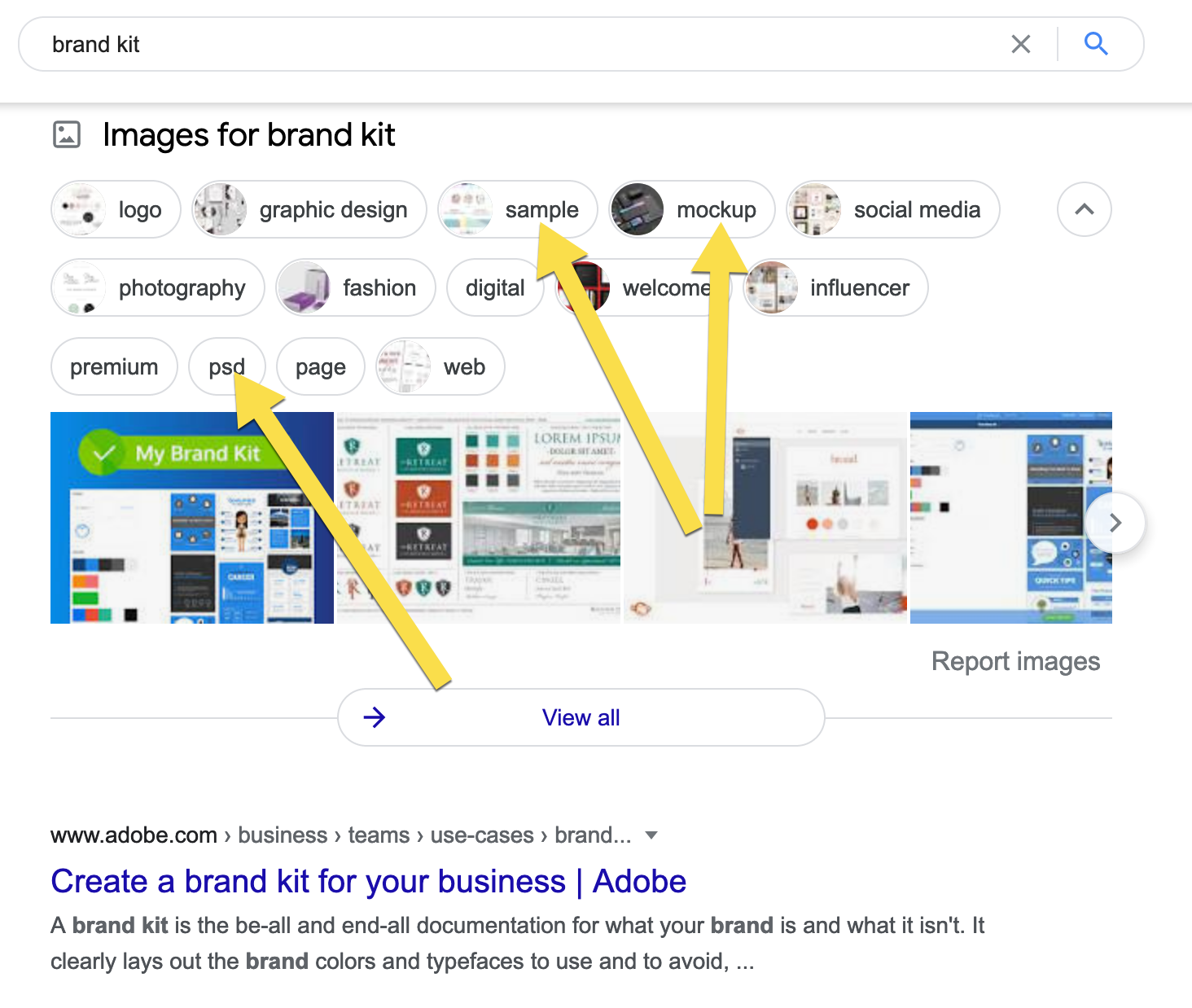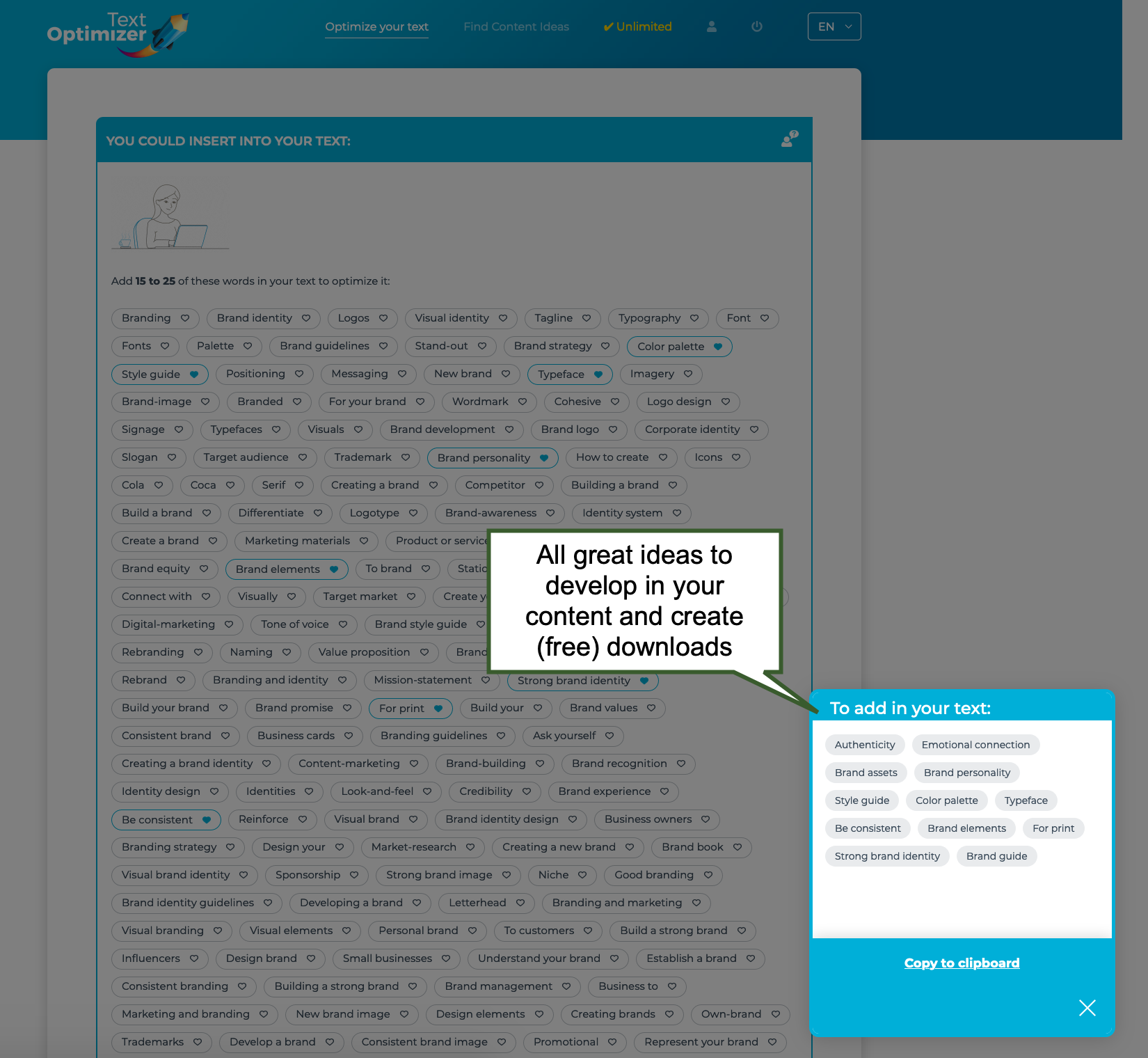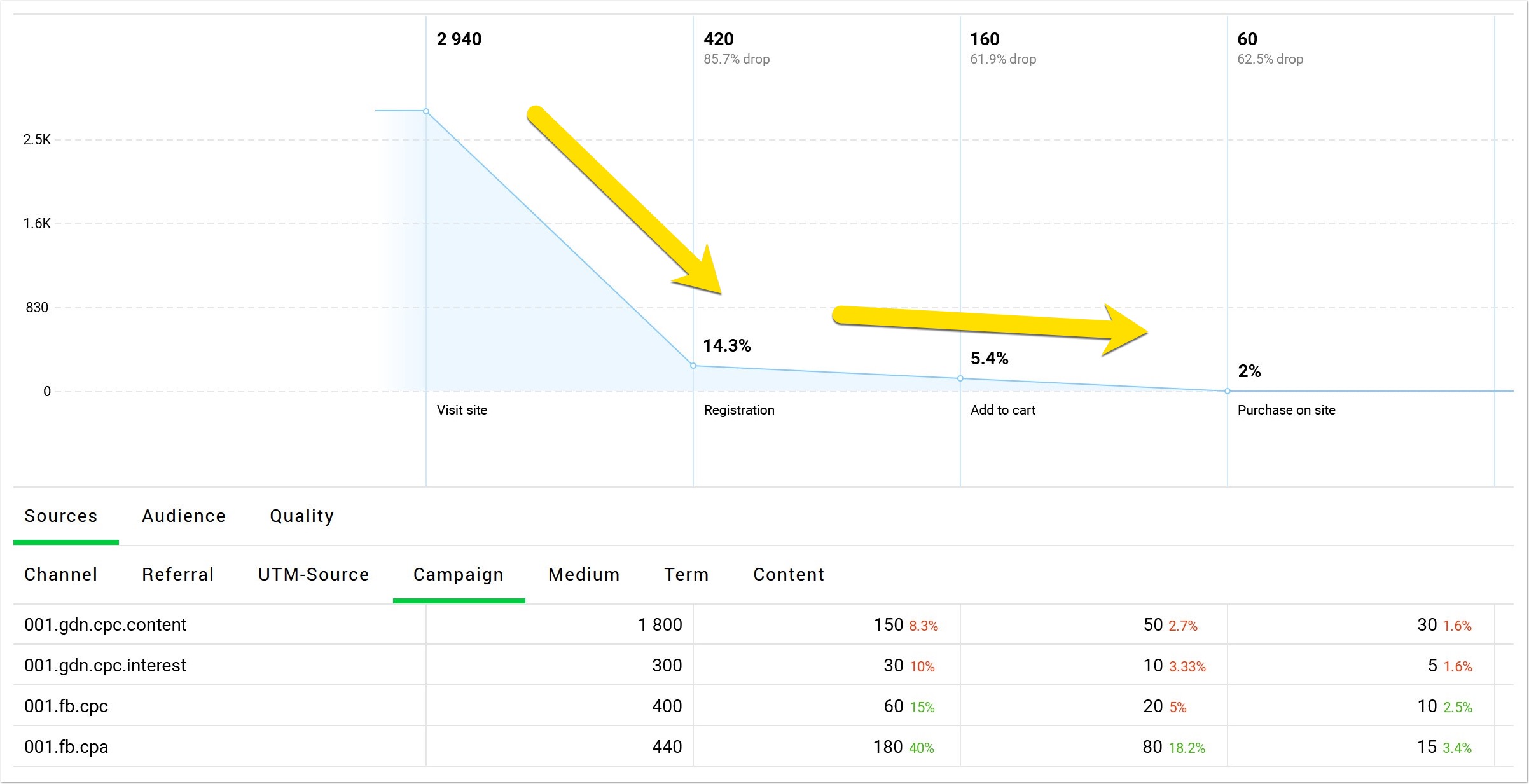The post Don’t Waste Your Google Ad Spend: How Negative Keyword Lists Can Improve Your Google Ads Campaigns appeared first on DigitalMarketer.
]]>
As I was auditing yet another Google ad account at my agency Digital Street, one of the biggest and most common mistakes that popped up once again was no negative keyword list or negative keywords added to any of the campaigns.
The ad account in question is spending $1500 a day i.e., around $45000 per month. I’ve audited 1000s of Google ad accounts and this one mistake annoys me to the hilt.
You Must Be Wondering, Why? What’s the Big Deal?
Let me explain.
First things first, let’s define what negative keywords are. Simply put, they’re words or phrases that you add to your Google Ads campaign to tell Google which search terms you don’t want your ads to appear for.
By excluding these keywords, you can save money, improve your click-through rate, and increase your conversion rate.
For example, let’s say you own an online shoe store that sells high-end designer shoes. You might want to bid on keywords like “designer shoes,” “luxury shoes,” and “high-end shoes” to attract potential customers who are specifically looking for your products.

However, you probably don’t want your ads to show up for search terms like “cheap shoes” or “discount shoes,” since those searchers are unlikely to be interested in your expensive products. In this case, you would add “cheap” and “discount” as negative keywords to your campaign.
Now, Why Are Negative Keywords So Important?
Well, let me break it down for you.
By eliminating irrelevant clicks and focusing on high-intent searchers, you’re likely to see a higher click-through rate (CTR), a lower cost per click (CPC), and a higher conversion rate. That means you get more bang for your buck and achieve better results from your Google Ads campaigns.
And who doesn’t want that?
So, How Do You Create An Effective Negative Keyword List?
Here are some steps to follow:

Are You Ready to Master Social Media?
Become a Certified Social Media Specialist and learn the newest strategies (by social platform) to draw organic traffic to your social media sites.
- Step 1: Start with a brainstorming session. Think about the types of search terms that would be irrelevant or low-intent for your business. There are certain words such as ‘free’, ‘reviews’, ‘cheap’ that we always exclude across all our accounts.
- Step 2: Use Google Ads’ Search Terms Report to see which search terms are triggering your ads. This report shows you the actual search terms that people are using to find your ads and can help you identify any irrelevant or low-intent search terms that you might have missed. At my agency Digital Street AU, we mine search terms every 48 hours. It’s part of our optimizing the ad campaigns process.
- Step 3: Add Negative Keywords to Your Campaign. Once you have your list of negative keywords, you can add them to your campaign by going to the “Negative keywords” tab in your Google Ads account.
- Step 4: Refine Your List Over Time. Remember, creating an effective negative keyword list is an ongoing process. Keep track of your campaign’s performance and adjust your negative keyword list accordingly.
In conclusion, negative keywords are a powerful tool that can help you save money, improve your ad performance, and achieve better results from your Google Ads campaigns. So, don’t neglect them!
Take the time to create an effective negative keyword list and watch your Return on ad spend (ROAS) soar.
Until next time, keep optimizing!

The post Don’t Waste Your Google Ad Spend: How Negative Keyword Lists Can Improve Your Google Ads Campaigns appeared first on DigitalMarketer.
]]>The post How to Easily Integrate Your SEO & Content Marketing Strategies appeared first on DigitalMarketer.
]]>
Why SEO and Content Marketing Need to Work Together
Pain: SEO and content marketing are two sides of the same coin, but there’s no built-in way for your SEO to inform your content marketing strategy or vice versa.
Agitate: The SEO is left out of the content marketing loop, and the content marketers are left out of the SEO loop.
Solution: The SEO to Content Marketing integration is the key to better content.
One of the biggest mistakes companies make is not integrating their SEO and content marketing strategies.
They treat them as two separate entities, and thus, fail to see the full potential of each.
If you think about it, SEO (Search Engine Optimization) and content marketing are intertwined: a good content marketing strategy can help you achieve better SEO results and vice versa.
SEO and content marketing are two marketing strategies that are all about making sure people get the right information about your business.
One is about making sure the information is presented in an appealing way (content marketing) and the other is about making sure people can find it (SEO)
Putting them together and making both of them work is the key to success.
Content marketing helps you:
- Build connections with customers and prospects
- Develop thought leadership
- Optimize conversions
- Improve your organic search presence
- Attract potential new customers
A strong SEO strategy helps you:
- Target quality traffic
- Save money on advertising
- Get you more clicks
- Bump your PR
- Get ahead of the competition
Putting the two together is a surefire way to scale your business fast.
How to Integrate Your SEO and Content Marketing Strategies

While it is true that some businesses have a separate content marketing team from their SEO team, many businesses are integrating their strategies into one team.
In fact, many content marketing strategies are SEO-based!
When writing engaging content, it’s important to have a keyword strategy in place.
Think about it — if you have a keyword strategy in place, you’re far more likely to reach your target audience.
Plus, from an SEO standpoint, you can easily determine if you are on the right track or not. You won’t be able to figure this out from day one, but you will be able to analyze data and see if the work that you are doing is paying off.
For example, if you’re working for a company that makes and sells cakes, you may have an article on how to bake a cake for content marketing purposes that has your SEO keywords inserted into it.
This will show up in the search engines and make it easier for people to find your company online.
If you’re running a social media account, you can also use SEO to improve your presence on social media. If you’re hosting an event, promote it using your social media accounts and link it to your SEO site with photos of the event and all of the products for sale.
For any company, SEO and content marketing go together and work together to help multiple platforms run more efficiently.
What are the main benefits of using one common strategy?
The use of SEO-optimized content offers undiscovered potential that provides you with the means to propel your business ahead of its competitors.
When it comes to most forms of internet marketing, the use of SEO-optimized content is a vital asset that helps optimize search engine visibility for an online business as well as being used in conjunction with other forms of internet marketing — like email marketing, social media marketing and pay-per-click marketing.
One of the main benefits of having a common SEO and content marketing strategy is that it will save you a lot of time.
For example, you won’t have to think about how to market your content, as you will have already considered this aspect.
When you integrate your SEO and content marketing strategies, you will have more time to concentrate on other things that are more important for your business.
Another benefit is that you will have a single point of contact for all of your content.
This means that you will have a single person who will be in charge of quality content for your website. The same person will be able to take care of the SEO, which will save you time and effort.
When you integrate your SEO and content marketing strategies, you will make sure that your content is always on-point.
And remember, content marketing is all about quality, not quantity!
Ultimately, the benefits of using this strategy are many, including: increased traffic, greater online brand awareness, and an expanded customer base.
In addition, this strategy is cost-effective, so you won’t have to worry about breaking the bank.
To sum it up, this strategy is the best way to draw in new customers and increase your business’s online presence.
Key Takeaways
To create a successful website, it’s important to consider integrating SEO and content marketing strategies to create a cohesive digital marketing strategy.
One of the best ways to get your website to rank higher is by optimizing your site for search engines. There are a lot of different ways to do this, and if you’re not careful you can get lost in the sea of information.
We’ve broken down how you can easily integrate your SEO and content marketing strategies to get the best results.
But here are a few questions to ask yourself before you dive in: Are you trying to achieve keyword ranking with your website? Or, are you looking to build high-quality, relevant content for your customers? Or, are you trying to do a little bit of both?
The way you approach your SEO and content marketing will depend on your goals. If you want to rank higher in search engines, then you’ll want to make sure you’re acquiring links to your website from other sources. If you’re putting out content for customers, then you’ll want to make sure the content is useful and relevant to their needs.
By providing interesting, informative content, you will attract new customers and help your current customers stay loyal to your business.
If you are interested in learning more about the ways that you can easily integrate your SEO and content marketing strategies, join us today.
The post How to Easily Integrate Your SEO & Content Marketing Strategies appeared first on DigitalMarketer.
]]>The post How to Optimize Your Content Strategy for Lead Generation appeared first on DigitalMarketer.
]]>
Digital marketing has evolved far beyond publishing regular blog posts and broadcasting them through brand-owned channels.
It used to work pretty well about a decade ago but it will hardly produce just about any results these days.
We live in the era of an always multitasking, ever-moving consumer who is hard to impress. These days most brands were forced to up their content creation game and start producing in-depth and interactive content, investing into video creation and designing original graphics.
However it is not enough. While content quality is fundamental, your content strategy will fail to have any impact on your company’s bottom line unless it is optimized for capturing and nurturing leads.
Step 1: Optimize for the Customers’ Journeys, not Just Keywords
Every content creator knows what keyword research is and how to find keywords for their next piece.
Well, this is no longer enough.
Instead of targeting keywords, target a customer’s experiences.
Behind each search query, there’s that searcher’s intent, i.e. what they are hoping to do when they see search results. As Lior Krolewicz of Yael Consulting, explains:
…purchasing intent is a measurement of the likelihood that a given individual will be purchasing specific goods or services at some point in the future. This is an incredibly powerful statistic, as it allows you to target people who are already in the market for what you are selling.
As buying journeys are becoming more and more complicated and unpredictable, you may adopt an even more robust approach.
In other words, for every content you are thinking to create next, identify:
- Which keywords (and questions) your target reader is likely to type into the search box when looking for something your content is answering / solving
- What may have brought them to search for those specific queries (Are they in the middle of the project? Are they in the process of buying something? Are they fighting a condition? etc.)
- Create content that serves #2 in the best possible way. Provide directions and downloads which would match all possible scenarios that may have brought people to your site.
This is how you create the most useful and most engaging content: You give your site visitors exactly what they were looking for.
Google search may give you lots of clues as to those customer journeys you need to match through your content. For example, if you search for something like [brand kit], you will see Google suggesting that many of their users are interested in samples, mockups and psd files, so this is something that would be helpful:

If you are writing content on creating a brand kit, include various downloads for your readers to be able to grab and play with right away.
A semantic research tool called Text Optimizer will also help you identify those various helpful angles and assets that will make your content irresistible.

Text Optimizer analyzes search results for any given search query and extracts associated concepts to give you a better idea how to satisfy your target reader better. The more suggestions you implement in your content, the better job it is going to do at matching your content to various browsing journeys.
Semantic analysis is certainly not a new concept but too many brands are still not utilizing it (and even have no idea what it is), so that tool is a nice way to start.
Step 2: Hook up Your Optin Forms to a Customer Relationship Management Platform
Most websites are using optin forms to get those lurkers to subscribe to an email list for businesses and writers to be able to build some type of relationships with them (and probably convert them into buyers later).
Well, this tactic is getting old.
Firstly, people are less and less willing to give away their email addresses. Secondly, our email inboxes are so cluttered these days that it is next to impossible to get your marketing email noticed.
It is high time that we rethink our lead nurturing process. Two possible ways to try out are:
- Hook up your opt-in forms to a customer relationship management platform. Hubspot provides one for free, but there are more CRM options to consider. A CRM platform will help you organize your contacts and develop a more comprehensive strategy of reaching out to them. You can use social media, keep a detailed record of all your interactions and identify best ways to turn your readers into buyers.
- Use Facebook retargeting to be able to reach out to your content readers with personalized ads through the platform. This will allow you to get in touch with those people who chose not to subscribe to your list. Here’s how to install Facebook’s pixel on your site.
Both of these methods do not require any technical skills to implement while allowing for multiple cross-channel marketing opportunities. Capture your content readers’ attention around the web!
Step 3: Monitor and Re-Evaluate Your Conversion Funnel
Finally, changing the way you evaluate your content effectiveness is a must if you want to better understand which of those articles do the best job matching your customers’ journeys.
Google Analytics is the most obvious option here, only it is not easy to figure out. Finteza is another option, especially with their “Funnels” option allowing you to clearly see which pages “funnel” web users into becoming leads and buyers.
Creating a funnel is easy: Simply select your article URL and then any number of “desired” actions (clicks, form fills, etc.) you’d like your article readers to perform. Finteza will show just how many users proceed interacting with your site the way you have planned this out:

You can also slice and dice your data to see more detailed information. For example, you can evaluate how mobile users are converting on that page. Or you can even narrow it down to any specific mobile device model. This is very helpful in developing customer personas and adjusting your page elements to engage your users better.
It is also a smart idea to include this evaluation in your monthly website audit routine to ensure it is performed on a regular basis. This way your content and SEO strategies will be more integrated, and hence more effective.
There’s also no shortage of engagement tools allowing you to diversify your CTAs, personalize your message and follow your customers’ journeys around the web.
Conclusion
A content marketing strategy is ever evolving. There’s never a point where you can say “I have found the most effective way to create and market content”. It is never going to happen.
Hopefully, the three steps above will help you find a few new ideas to experiment with. Good luck!
The post How to Optimize Your Content Strategy for Lead Generation appeared first on DigitalMarketer.
]]>